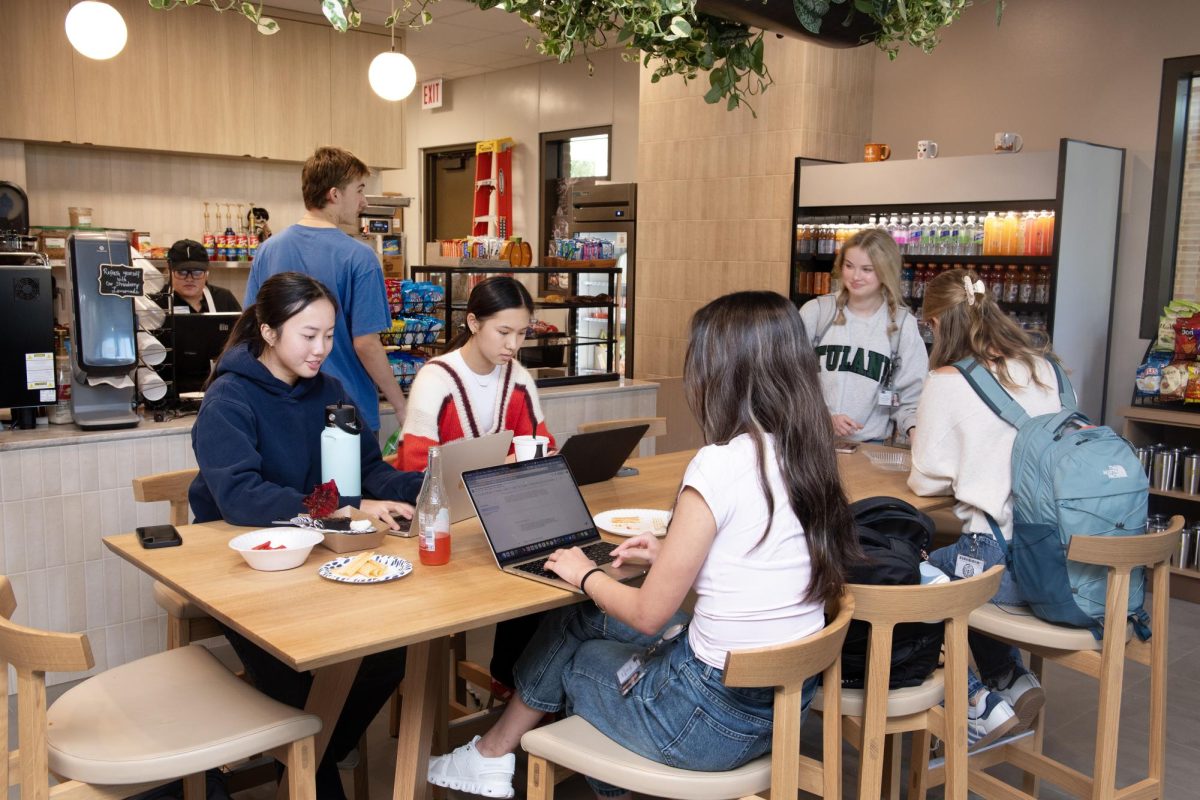Theatre classes raises curtain on writing process
Rob Satcher, freshman. and Jack Denechaud, sophomore, show off their distilled scene to the whole class.
January 21, 2022
All of a sudden, the only thing that filled the room was a booming pop sound that disrupted not only the quiet environment that was needed for the script-writing portion of class but also started the rowdiness that would happen during each class period.
The noise had come from a balloon that Ms. Frances Limoncello, children’s theatre teacher, had planned on using for one of her exercises in the Interim Term class “Devised Theater.”
In each class, the students worked through many different exercises, like the balloon game, to get them both awake and prepared for the class but to also help them become closer as an overall group.
“My favorite moment was probably when we did the ‘I begin, I end’ exercise because we make up random scenes and just act it out,” freshman Daniel Patterson said. “ ‘I begin, I end’ exercise is basically when you say ‘I begin’ and do some type of action and when you finish, you just say ‘I end.’ Some other exercises were improv and “count to 21.”
“Devised Theater was a collaborative process through which an ensemble created a piece of theater,” theatre teacher Ms. K’Lynn Childress said. Although both Ms. Childress and Ms. Limoncelli teach theatre, each of them focused on one aspect of theater: writing and storytelling through their actions.
“We’re trying to learn how to create a show in a way that emphasizes movements and getting to the point of the story,” junior Edith Essandoh said.
In the first period, the class usually learned how the writing aspect of theater works, which includes scripts, screen-writing, and stage directions.
“In Devised Theater, it becomes very enjoyable because it helps get everything out that isn’t always shared,” said freshman Daniel Patterson.
Since most people look past the writing aspect of theatre, this class tried to encourage the students to dig a little deeper into their writings and others’ as well.
In the second period, the main focus was on certain movements and moments that can change or greatly impact a persons’ view in theatre. It can be hard to notice different movements or moments that happen in plays, movies, and even television shows because there may be so much going on. But in “Devised Theater,” it was quite the opposite.
Once they started to focus on both the movements and moments that happen, students could understand the different theatrical parts. They would do different exercises such as architectural movements, where different parts of the architecture would be used to improve the scenes, or distilled movements in which students had to take away the aspects of telegraphing any feelings or relationships between characters.
Overall, the class gave students many opportunities to explore the world of theater without actually having to be in a play, learn the true process that actors and actresses have to go through, and push people out of their comfort zone so that they could become more vulnerable with others.












